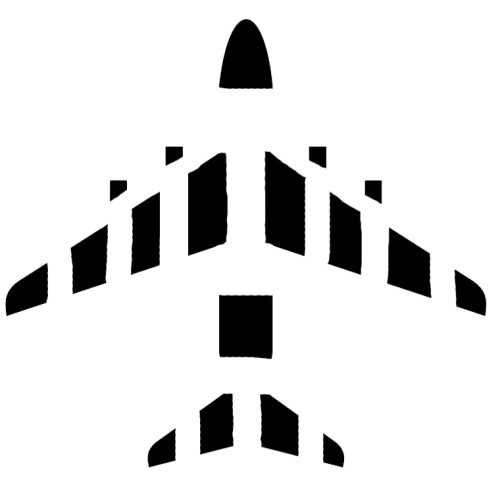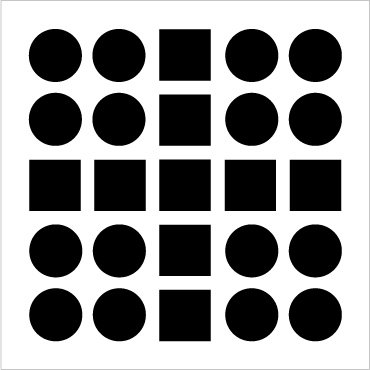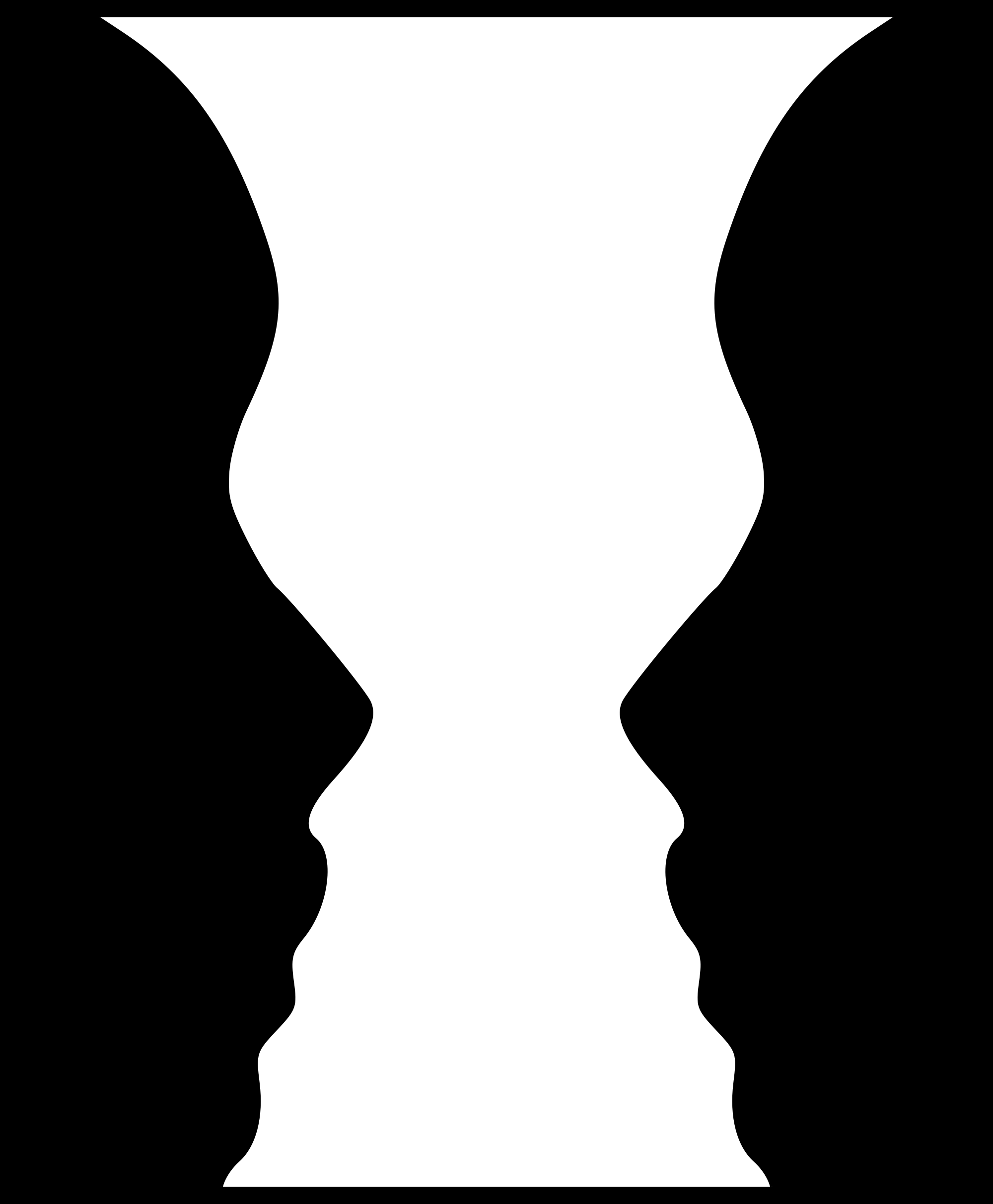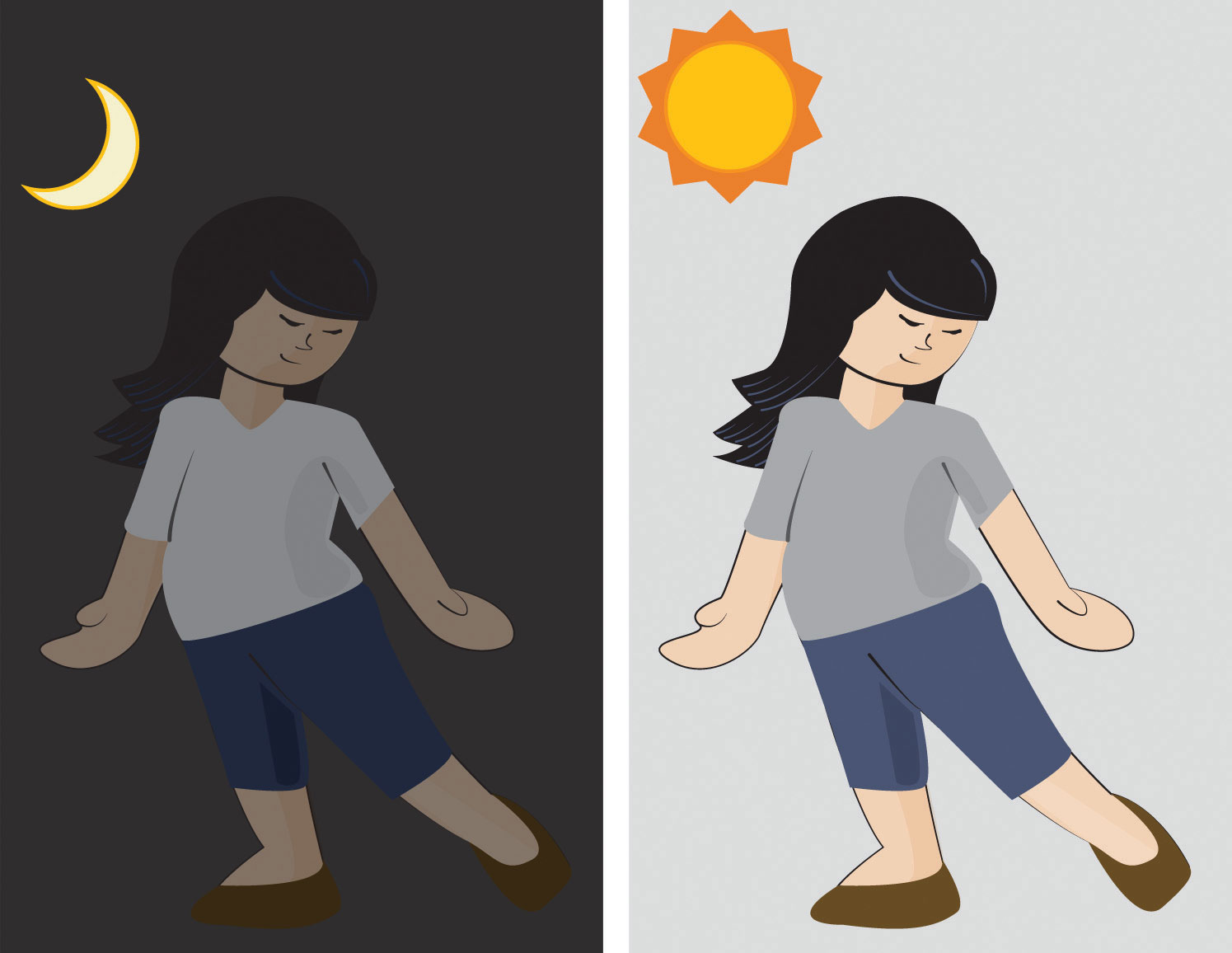Kara
Blazey
Closure: The illusions of seeing an incomplete stimulus as
though it were a whole; humans tend to look for recognizable objects or
patterns and are able to perceive them from incomplete pictures.
Ex: in the picture, the entire plane
is not drawn but you still know that it is a plane.
Continuity: the eye is compelled to move through one object
and continue to the next; continuous lines or patterns that don’t break and are
seen as a whole.
Ex: or mind leads us to believe the
lines in the picture flow in one direction
Similarity: a person can normally recognize stimuli that
have physical resemblance at the same degree as part of the same object.
Ex: together, the squares and circles make one
large square but they are each individually squares and circles.
Proximity: people perceive that stimuli are close to one
another by grouping them and recognizing them as part of the same object; stimuli that are placed far apart are recognized as different objects.
Ex: the eagle head as shown in the
picture, has a similar base to the sun that is on top of it, this gives off the
impression that they are a part of the same image/shape, but if they were not placed as close together we would see them as two different pictures.
Grayson Kinsey
Figure: ground organization is a
perceptual law, that is known as identifying a figure from the background.
It is a property of perception in which there is a tendency to see parts
of a visual field as solid, well-defined objects standing out against a less
distinct background. For example, you see words on a printed paper
as the "figure" and the white sheet as the
"background”, the perception part is which you see first, or what your
eyes are first drawn to.
Another Example:
This works as an example because some viewers might be
drawn to the white potion of the picture, which looks like the background,
making them see the vase figure. Where as, others might be attracted to the
black portion of the picture appearing more frontward, making them more likely
to see two faces.
Stroboscopic motion: is a visual phenomenon caused by aliasing that occurs when continuous motion is
represented by a series of short samples. Stroboscopic motion is an illusion
when lights or images are flashed quickly and the brain perceives them as
moving. A great example of stroboscopic motion would be a flip book.
Example:
One image is quickly replaced by another image with slight
alteration to the original, resulting is a “motion” picture. The brain perceives
these flashing images as a whole rather than seeing the pictures as separate
images.
Phi
Phenomenon: is motion perceived by a
subject, especially the illusion of movement produced when stationary stimuli,
as pictures or lights, are presented in rapid succession and are sometimes in
slightly different positions.
Example: The
brain perceives the lights that are hanging off the tree as moving, when it is
really the flash of light traveling down the rod. The rod is not moving at all,
even though your brain makes you think that.
A
reversible figure: is an ambiguous two-dimensional drawing that represents a
three-dimensional object in such a way that it can be seen from two different
perspectives.
Example:
A reversible cube, consists of two squares that represent the
front and back side of the cube. The figure is reversible because the front and
back squares appear to switch places creating two possible perspectives, the
perspective of viewing the cube from beneath or the perspective of viewing the
cube from above.
Rachael Barrick
Depth Perception: There are two types of cues that go along with depth perception. One of these is Monocular Cues. This kind of cue uses one eye, and it is all about size shape, how tall something is and the motion it performs. The second cue is called Binocular. This cue is when you are using two eyes to create two viewpoints. There is also a cue for when you are using a mix of both. Movement in depth perception is when the observer can notice that an object is moving, for example closer to them by seeing that the object is getting bigger which would mean that it is moving closer. With this the size of something along with height will vary because of how far away something is to change how you perceive it. Along with Monocular Cues comes interposition. This is when two objects overlap to make us perceive that there is depth with an object. For example with a cube it is really just a bunch of overlapping squares. Texture Gradient in Monocular cues is when something is further and further away so we perceive it as being more soft and smoother when it is far but rougher when it is more near to us.
Example: This train track is an example of monocular cues
because as the track gets further and further away it slowly starts to
disappear into the distance.
Size Constancy: The perception of
an object will not change regardless of what may appear as the change in size
on the retina.
Glynnis Carter
Brightness Constancy:
The color black only reflects 10% of light that falls on it,
while white reflects 90%. In other words, a white object with a shadow cast on
it may be the exact same color as a black object in full sunlight, but the
white object will always appear to be lighter. For example, my friend and I are
going on a hike. She is wearing a dark gray shirt, and I am wearing a white
shirt. My friend climbs to a point where there is full sunlight, while I stay
under the shady trees. The shadow makes my white shirt appear darker,
ultimately making our shirts identical in color, but because of brightness
constancy, my shirt will still appear lighter.
Shape Constancy:
When looking at an object from a certain angle, we see a
shape. Sometimes, as we change our angle of vision, the shape of the object
appears to be different, but we still see it as its original shape. An example
of this could be looking at a billboard. When looking straight on at the
billboard, we see a rectangle. When walking 45 degrees, the shape of the
billboard appears to be different, but we know a billboard is supposed to be
rectangular, so that’s how we see it.
Visual Illusions:
Visual Illusions are pictures
strategically set up to alter the way we use our senses. The brain will see the
picture and process it one way, but it may miss another meaning. The way a
picture is drawn can make the picture appear to be moving, that is an illusion
because the picture is still.
works cited:
http://fulcherlab.academic.wlu.edu/files/2014/01/optical-illusion-4.png
https://blogger.googleusercontent.com/img/b/R29vZ2xl/AVvXsEhnE5nOJCMw9GxeA_2PxFbXXSiU07XOEQ70-sjl8Sxwt5VI6LKrXrA5_X_sW_lGrXzPYyWpGj1htlBomImuZVcUFNI8UsdbhLqqmy_Dy55sdLcyW7fGD_06iRm6LMAKLXtxCbZjGWVt-N7J/s320/necker_cube.gif













No comments:
Post a Comment